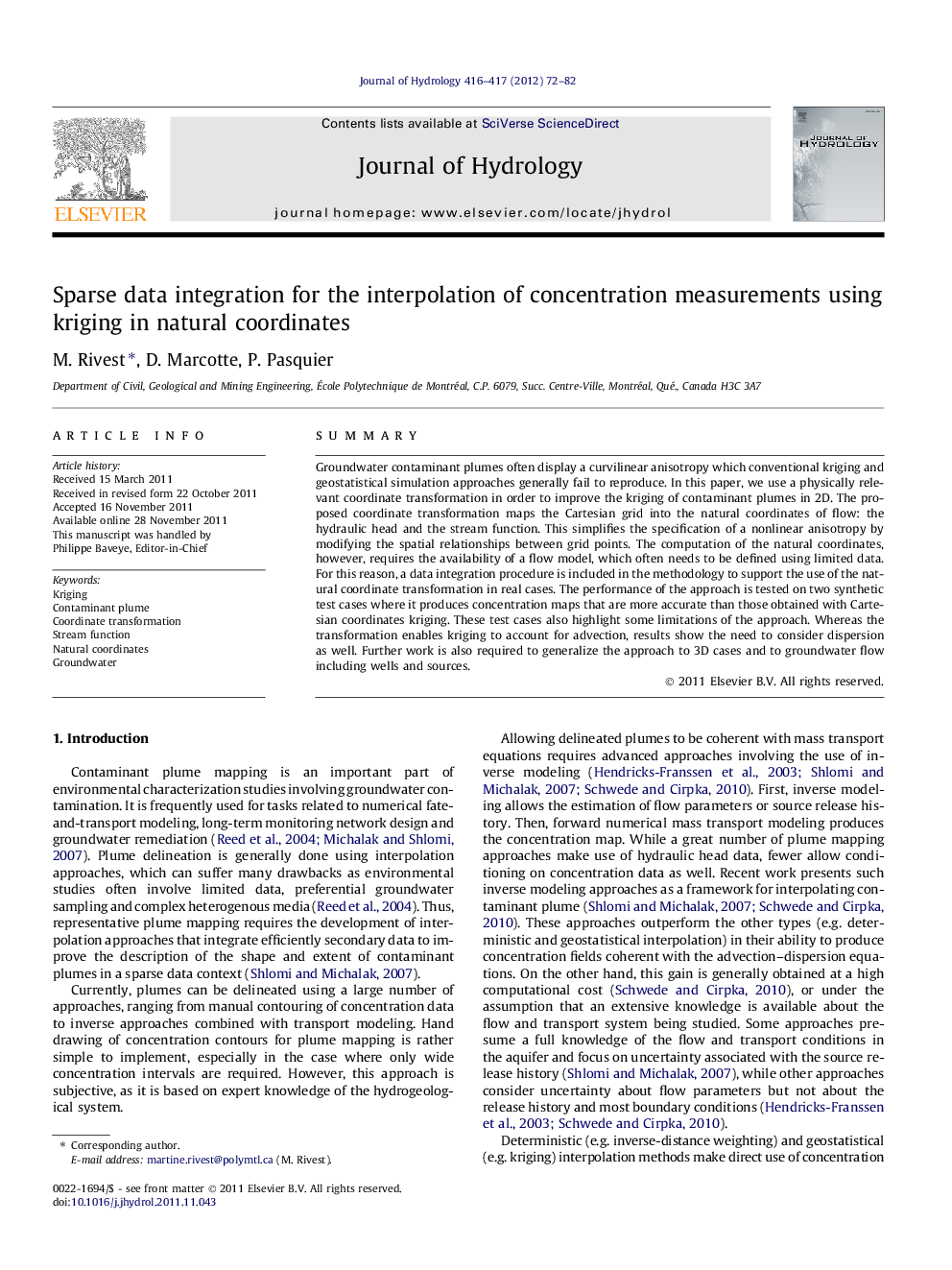| Article ID | Journal | Published Year | Pages | File Type |
|---|---|---|---|---|
| 4577266 | Journal of Hydrology | 2012 | 11 Pages |
SummaryGroundwater contaminant plumes often display a curvilinear anisotropy which conventional kriging and geostatistical simulation approaches generally fail to reproduce. In this paper, we use a physically relevant coordinate transformation in order to improve the kriging of contaminant plumes in 2D. The proposed coordinate transformation maps the Cartesian grid into the natural coordinates of flow: the hydraulic head and the stream function. This simplifies the specification of a nonlinear anisotropy by modifying the spatial relationships between grid points. The computation of the natural coordinates, however, requires the availability of a flow model, which often needs to be defined using limited data. For this reason, a data integration procedure is included in the methodology to support the use of the natural coordinate transformation in real cases. The performance of the approach is tested on two synthetic test cases where it produces concentration maps that are more accurate than those obtained with Cartesian coordinates kriging. These test cases also highlight some limitations of the approach. Whereas the transformation enables kriging to account for advection, results show the need to consider dispersion as well. Further work is also required to generalize the approach to 3D cases and to groundwater flow including wells and sources.
► Kriging fails to reproduce the curvilinear anisotropy found in contaminant plumes. ► Natural flow coordinates modify the spatial relationships between data points. ► We estimate natural flow coordinates by integrating all available flow data. ► Using natural flow coordinates enhance the kriging of contaminant concentrations.
